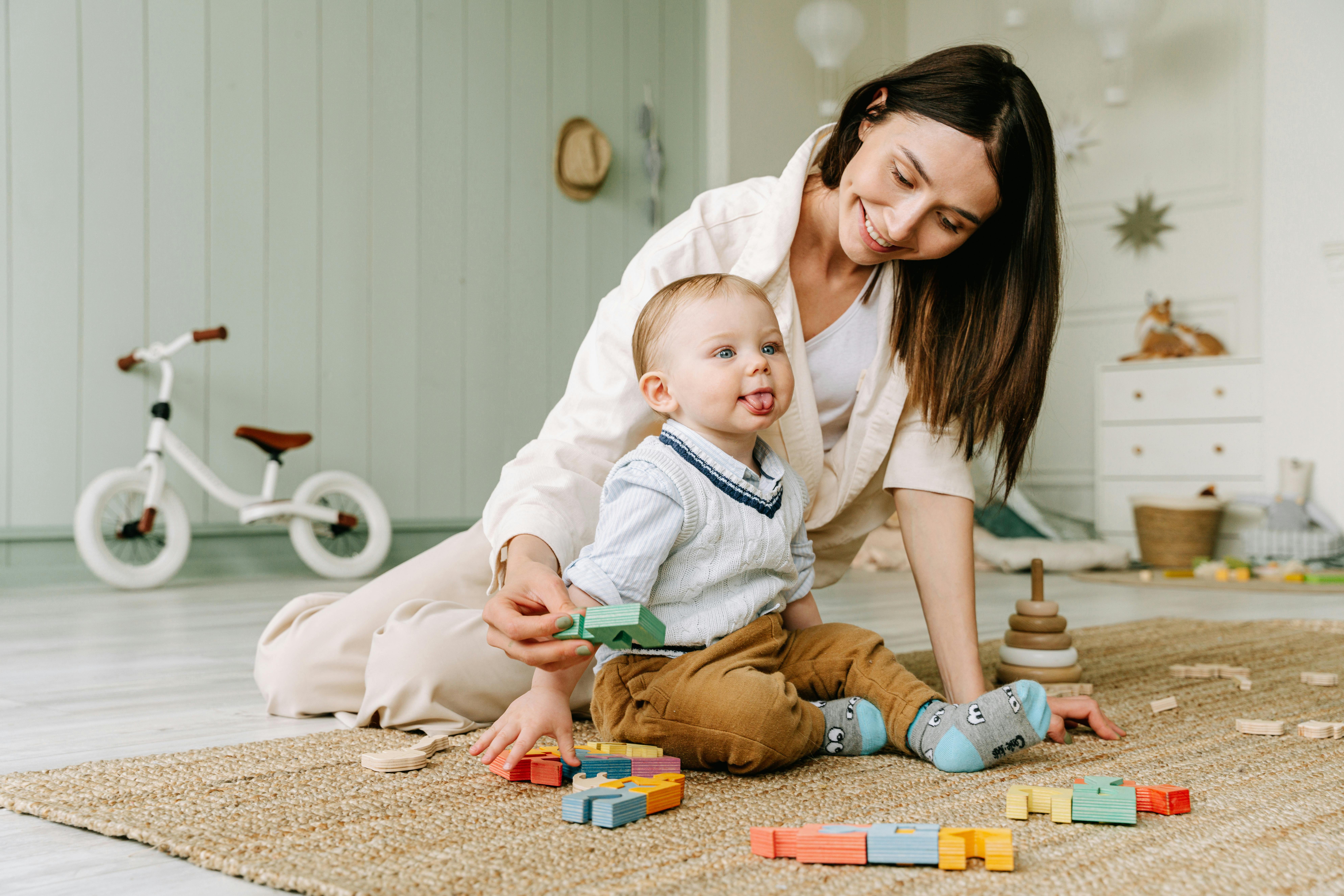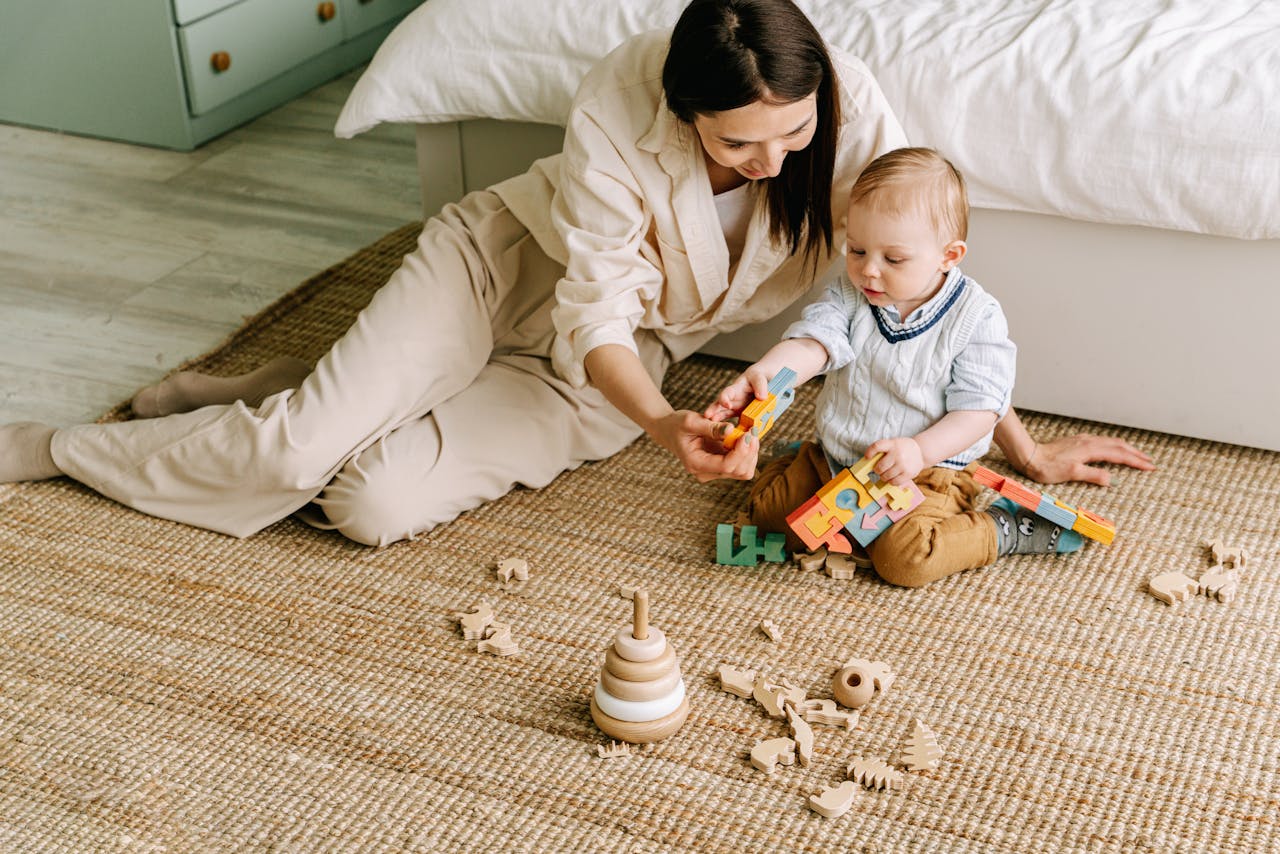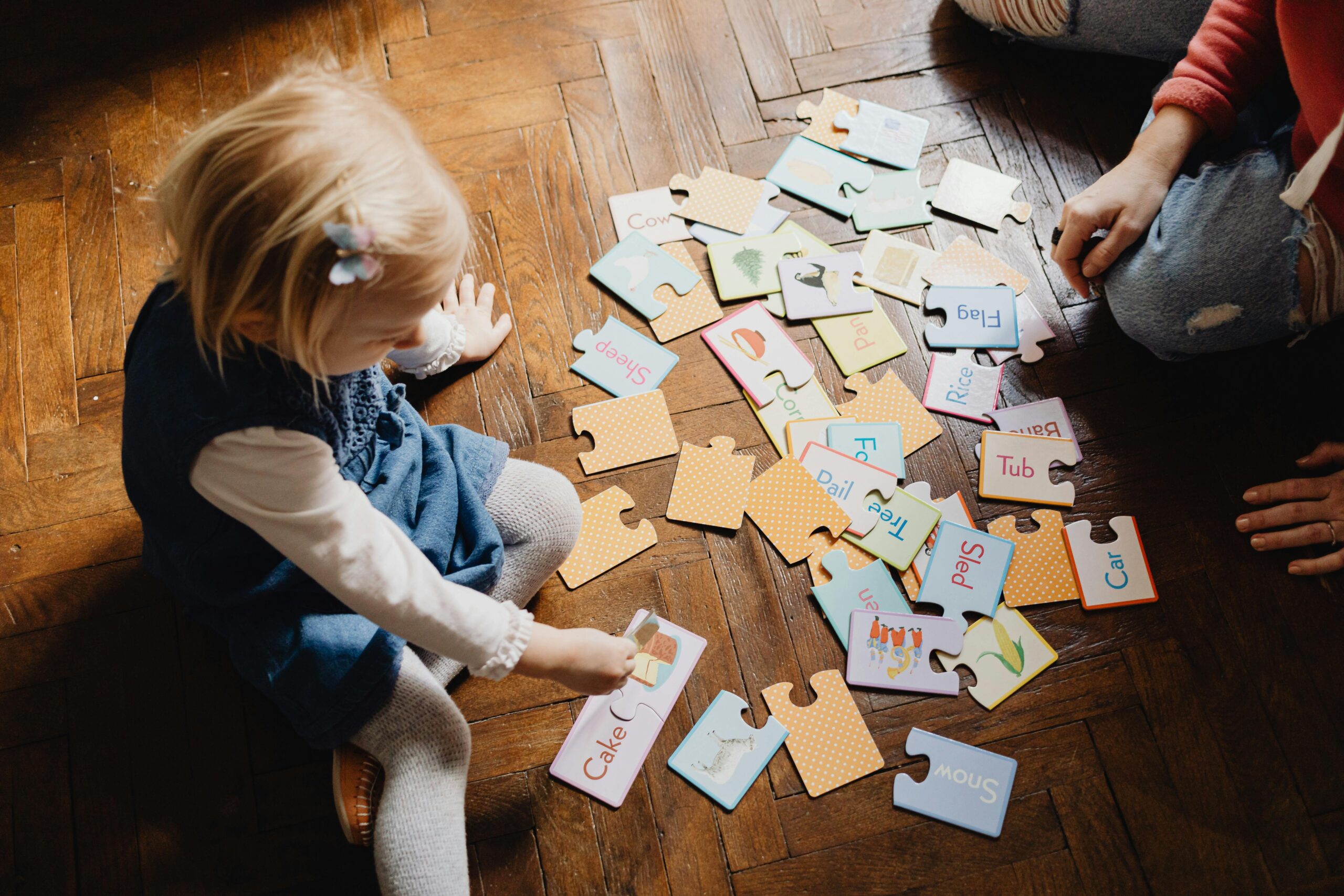🧸 More Than Just Fun
We often think of play as light-hearted, messy fun — and it is. But for toddlers, it’s also a powerful emotional tool.
When you regularly sit, engage, and play with your child, you’re doing more than entertaining them — you’re helping them feel safe, seen, and loved.
This emotional foundation sets the stage for everything else: from learning to confidence, and even how they relate to others as they grow.
❤️ The Connection Between Play and Emotional Safety
Emotional security begins with predictable, nurturing interactions — and play is one of the easiest ways to create those moments.
Here’s what’s happening during play:
- Your child experiences responsive attention
- They build trust that you’ll show up, listen, and be present
- They feel valued, as their choices and actions are acknowledged
- They gain a sense of control over their world in a safe space
This kind of security gives toddlers the courage to try, fail, and try again — a skill that lasts a lifetime.
🔄 Repetition + Connection = Trust
When children know they can count on a consistent playtime with you — even for just 10–15 minutes a day — they begin to associate your presence with comfort and regulation.
This is especially helpful after transitions or big feelings:
- After daycare or preschool
- After tantrums
- During illness, teething, or change
Simple rituals like solving a puzzle together, stacking blocks, or matching shapes can offer a calm, grounding reset.
👁️ Being Present Matters More Than What You Play
You don’t need to plan elaborate games. It’s your attunement that makes play powerful.
Try:
- Matching your child’s energy (quiet or animated)
- Making gentle eye contact and offering smiles
- Reflecting their play back to them (“You’re lining them up like a train!”)
Even shared silence can be bonding — especially in focused activities like completing a puzzle together.
🌱 Long-Term Benefits of Emotionally Secure Play
Studies show that emotionally secure children:
- Explore more confidently
- Form stronger relationships
- Show better emotional regulation and resilience (Thompson, 2001)
In other words — play isn’t a break from development. It is development.
💡 Final Thought
The next time you sit down to play, remember that you’re doing something profound: helping your child feel secure in themselves and their world.
You don’t need scripts or perfection. Just your presence, your warmth, and a few simple toys designed to be explored — together.
👉 Toys That Encourage Quiet, Connected Play
📚 Reference:
Thompson, R. A. (2001). Attachment Theory and Close Relationships. Guilford Press.


